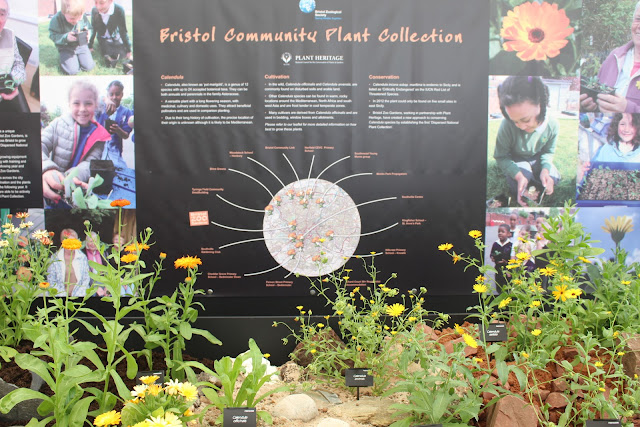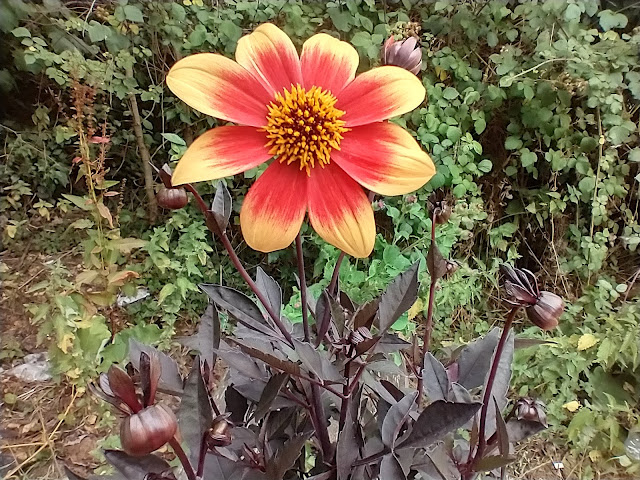Canoodling with the Calendula
The Plant Heritage tent at RHS Hampton Court is always one of my favourites as it's a fascinating place which offers the chance to learn from the experts.
It was a delight to talk to the Bristol Zoo representatives about the first Dispersed National Plant Collection aka The Bristol Community Plant Collection. According to the exhibit's useful fact sheet, Calendula encompasses 12 species with around 24 accepted botanical taxa. As you can see, they can be quite different looking plants; I've grown too used to seeing the cultivated form to appreciate the diversity on offer.
When the zoo's Emma Moore explained the project, it made sense as the different species can be grown on sites most suited to their needs, plus it reduces the risk of cross breeding. Each group involved is trained to grow, maintain and harvest the seed from their allocated species.
I also spoke to Barbara Franco from Shirehampton Community Action Forum, and it was evident she's extremely proud of her involvement in the project. She told me some of the species in the collection are threatened with extinction in their natural habitat due to changes in land use.
Here in the UK we grow our Calendula as annuals, though I've often wondered if they truly are as I've seen so many overwinter in milder years. I found my answer in the Plant Heritage tent - in warmer climates they're short-lived perennials, but the plants tend to become more woody and less attractive with age. It seems we get the best of them in our cooler climate.
Latin Without Tears
According to the Plant Heritage fact sheet, Calendula is from the Latin for the first day of the month kalendae, and refers to the plant's long flowering period. The plants are native to the Mediterranean, North Africa and Macaronesia (which is the group name for the islands forming the Azores, Canaries, Cape Verde, and Madeira off the north-west coast of Africa).











An interesting, and informative, post about 'Flighty's favourites'. Flighty xx
ReplyDeleteThanks Flighty - they're such a cheerful plant aren't they? A most useful edible and medicinal herb too.
DeleteThat is an interesting and well thought out project with each species growing in different areas. I have only known about and grown the 'Pot Marigold' annual. Did they say if any of the others are available as seeds to buy in the UK?
ReplyDeleteHi Brian, I didn't think to ask. There was the usual Plant Heritage stand with seeds for sale, but I didn't have time to look through them this year - it's a huge show to get round! I'll see if I can find out...
Delete